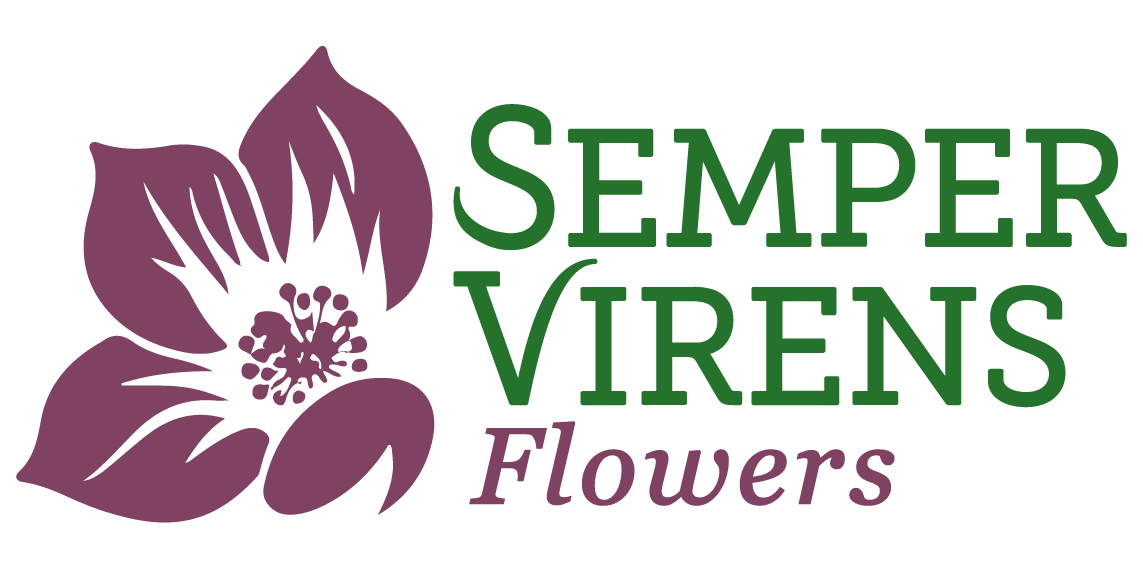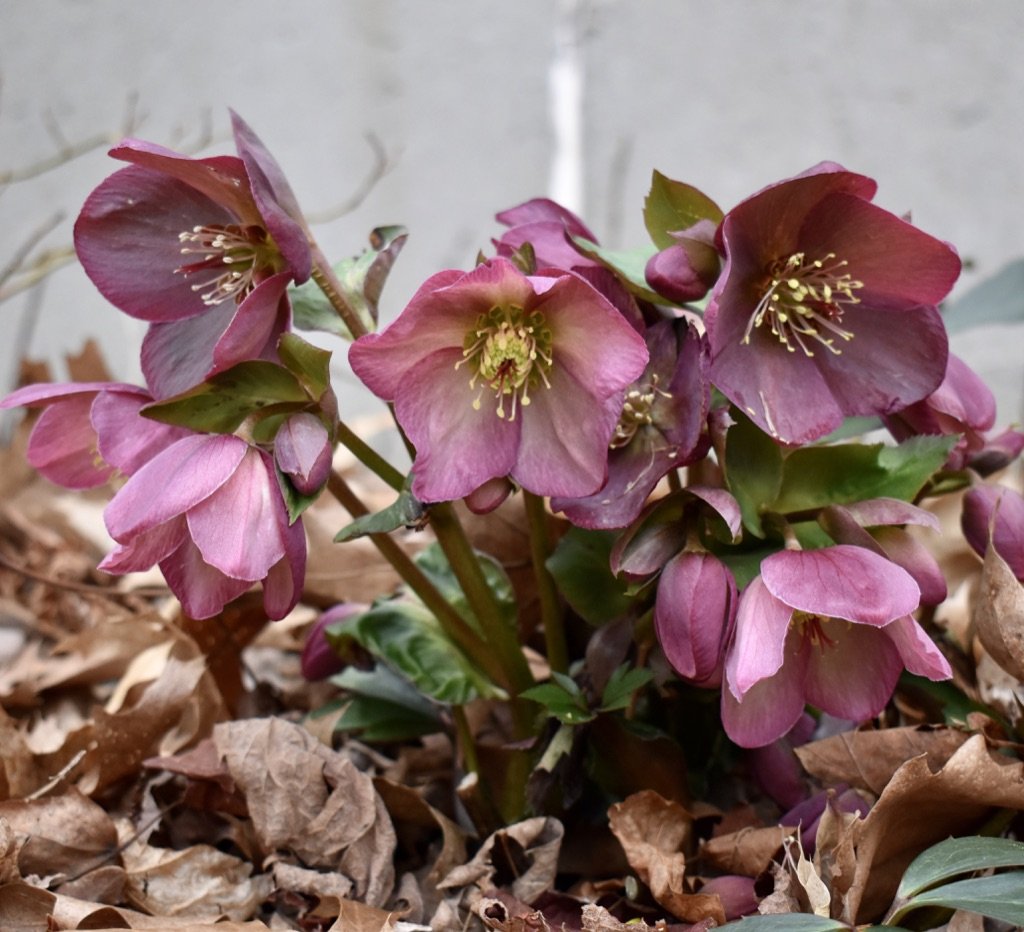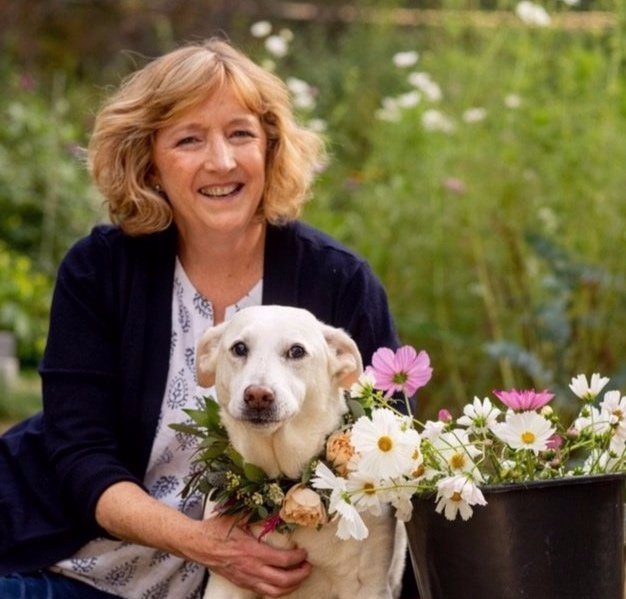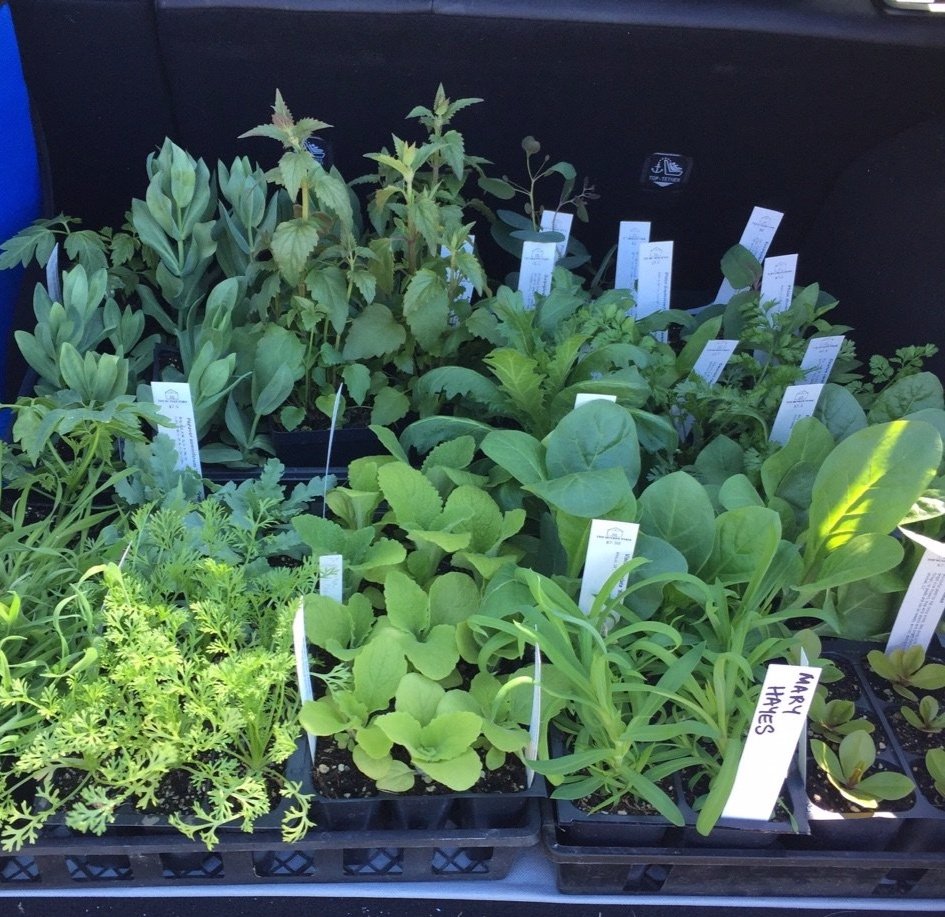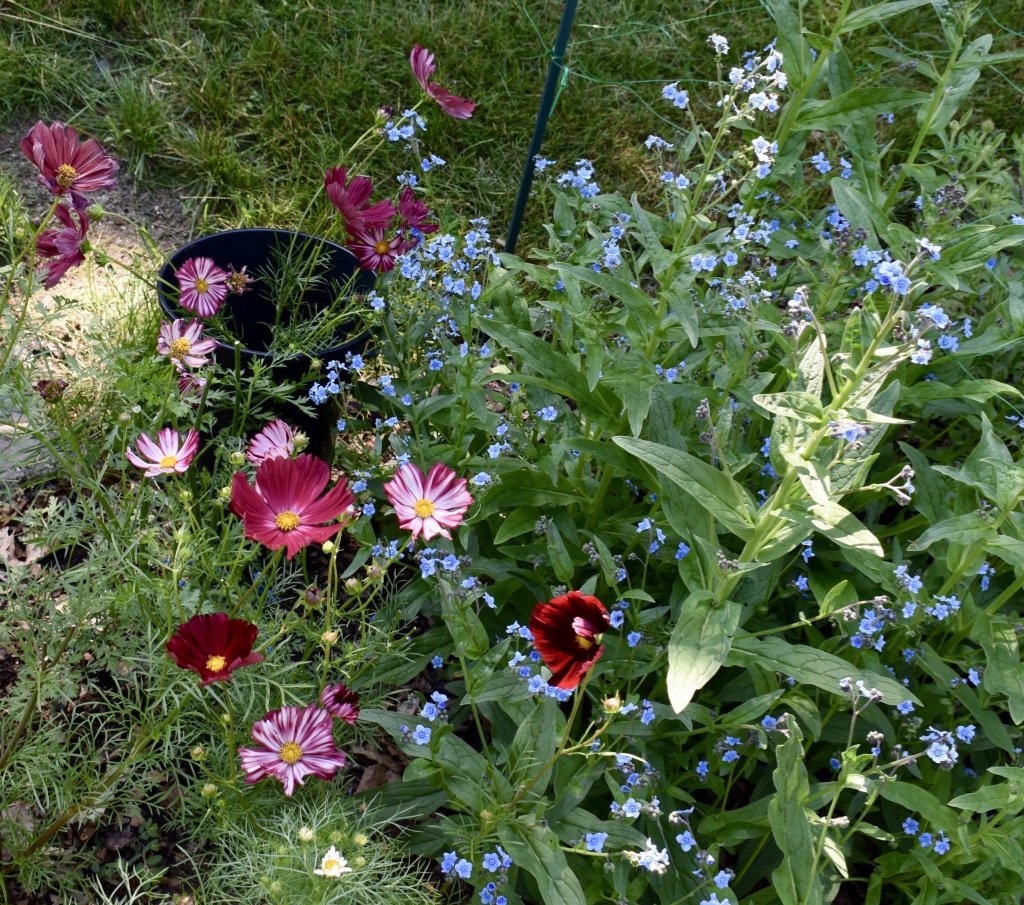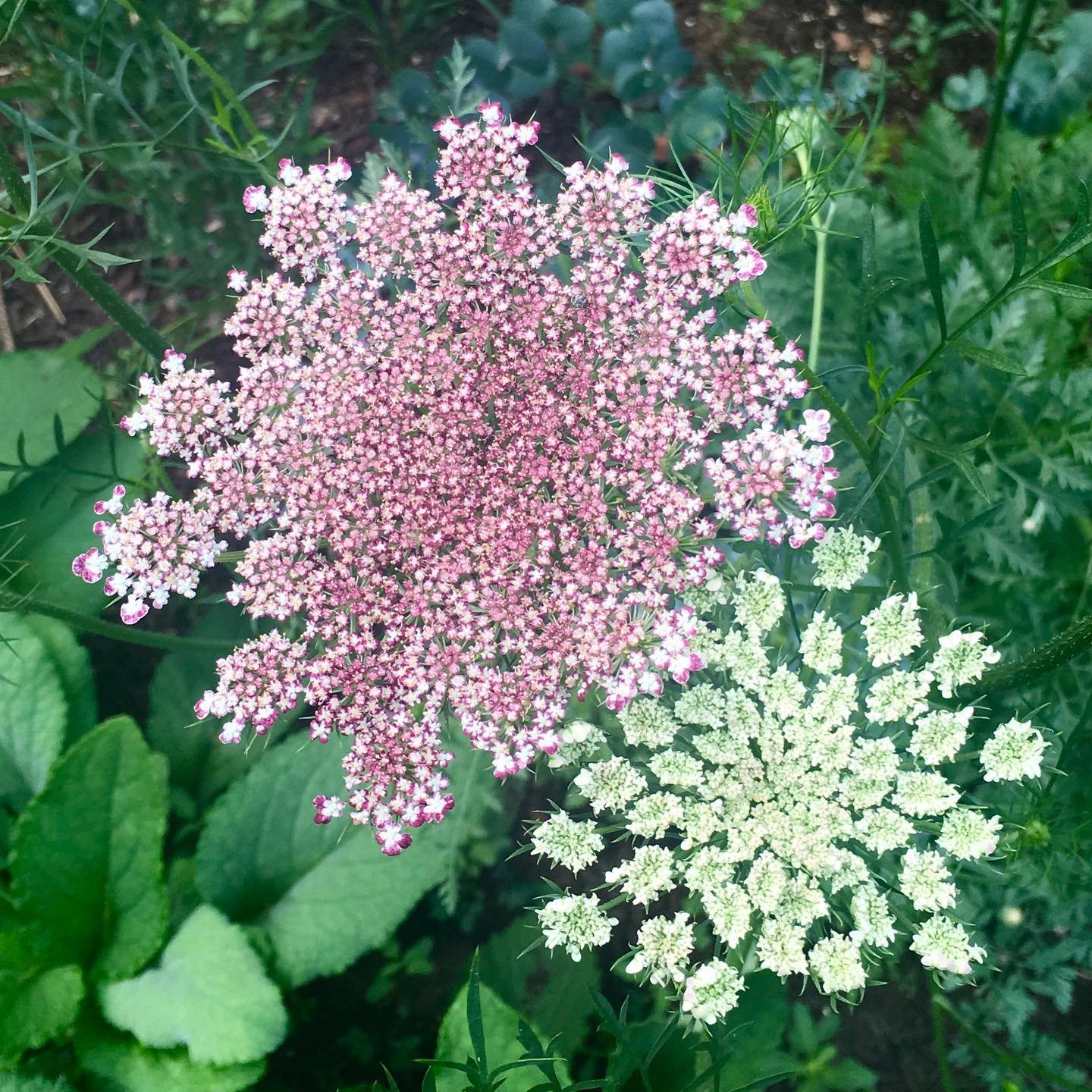Where Do You Get Your Flowers? (Part 1 of 2)
Cutting garden season is well underway, and it’s been a pleasure to be working in the garden again. This is my fourth year my Modest Cutting GardenTM, and it’s getting easier and more productive each year. Every season is a different backyard adventure, and I can’t wait to see what this year brings.* I hope this blogpost provides inspiration and helpful advice so you can enjoy LOTS of gorgeous flowers later in the summer and fall! This is Part 1 of a 2-part blog post.
A question I’m frequently asked when I give my Cutting Garden workshop is: Where do you get your flowers?
The answer is that I do a mix of things to fill the cutting garden with reliable and unique flowers. Why not grow the really cool stuff?: Nigella, Cherry caramel phlox, talinum limon, amaranthus, starflower pincushion, etc.. Here are some of my favorite cutting garden plants and sources:
Growing annuals from seed - I direct seed a variety of plants, some as soon as the soil can be worked, and others after the last frost, depending on the flower. Many plants do better when planted directly unto the ground (not transplanted). Lisa Marie Ziegler’s The Gardeners Workshop has many resources for learning to grow cut flowers, including direct seeding both in the fall and spring. Check out her website for free tutorials, her books are also excellent. If I can successfully do direct-seeding, so can you. It just takes practice and attention. It’s less work than starting seeds indoors, where you have to baby the seedlings for weeks and harden them off prior to transplanting. Let Mother Nature do most of that work. #
Flowers that prefer to be direct-seeded include zinnias, cosmos, amaranthus (Love Lies Bleeding), celosia, nigella, cornflowers, and scabiosa. These are cut-and-come again flowers: the more you harvest the blooms, the more blooms you’ll get! It’s a flower miracle! Recommended seed sources: Fruition Seeds, Johnny’s Selected Seeds, Gardeners Workshop, and Baker Creek Heirloom Seeds. And Burpee’s Seeds, of course.
Planting perennials - There are many SUPER LOVELY flowering perennials that deserve a place in your cutting garden: baptisia, peonies, coneflowers, irises, sedum and yarrow, to name a few. Shade-tolerant perennials include hellebore (crazy pretty, with a long-lasting flower), Bleeding Heart (Dicentra), Solomon’s Seal, Lady’s Mantle (Alchemilla) and ferns such as Japanese Painted Fern and Branford Rambler. Many of these perennials are tough and beautiful, and will provide gorgeous foliage for your flower arrangements even after they stop blooming. Every spring, they come back and start filling up your garden again! These plants I usually do buy from conventional garden centers. Local garden clubs plant sales are another good source for perennials, often propagated by the club members or dug up from their gardens. These are great for low prices and because their perennials will do well in your area. Plant sales are generally held in the spring and early summer.
Keep the perennial plants in a separate area from your annuals in the cutting garden for easier maintenance. Avoid perennials that spread by rhizomes, as they can become raging monsters in your garden (ex: Obedient plant, bee balm, creeping bellflower). Not fun!
Buy six-packs that somebody else grew: There’s no shame in buying six-packs for your cutting garden! Hey, even flower farmers buy seedlings or plugs. Flower farmers buy in bulk though, with minimum purchases of 125 or 210 plugs, way too many for most home cutting gardens. I generally don’t recommend buying six-packs from garden centers, as those plants were often fed hormones to promote early flowering, and are often hybridized to be shorter. We want TALL flowering plants with LONG stems for our arrangements. For that, you have to seek out organic garden centers and/or locally grown plants at farm stands.
Every May, I make a pilgrimage to The Bunker Farm near Putney VT to pick up TERRIFIC flowers from Helen O’Donnell, who grows many unusual annuals that you simply won't find elsewhere. She’s been called the “Annie’s Annuals” of the East. Well worth the trip! Where else can you buy salpiglossis, nigella, scabiosa, toadflax, talinum limon?? And so many salvias, snapdragons, foxglove and marigolds in so many colors! Make a day trip to The Bunker Farm, and scout out maple syrup and other tasty local products while you’re there.
P.S. I recently (May 10) found extremely reasonably priced six-packs of lisianthus plants (Echo Mix, Echo Blue Picotee, Yellow) at Rock Ridge Farm in Northfield, MA, at the intersection of Routes 10 and 63. Lisianthus has a beautiful small rose-like flower on willowy stems with lots of buds. Gorgeous, easy to grow (NOT easy to germinate though), and long vase life. Rock Ridge has locally grown produce as well. That’s what I mean about seeking out the small farm and garden shops for plant treasures.
I’ll be back in a few days with Part 2 of Where Do You Get Your Flowers?
Please add your great plant sources and cool farm stands in the comments below, thanks!
* Except for the new neighborhood coyote….not thrilled about that, he’s a big boy. Although there are notably fewer bunnies and deer around here now, so there’s that.
# One day I will figure out thow to grow from seed started indoors, to expand the kinds of flowers I can successfully grow in a season. I’m not there yet. Kudos to you folks who start from seed indoors!
